- Home >
- Our Actions >
- Ambassador report
16
Comments
Sea Speaks to the Souls on World Ocean Day 2015 - by Simran Vedvyas |
|---|
|
by Simran Vedvyas | 08-06-2015 17:14
|
|
Raising Awareness to Reduce Plastic, Planting Native Ghaf Trees, Mangroove Rehabilitation and Beach Clean Ups Sea Speaks to the Soul is our theme to shout out loud by our ACTIONS for Oceans. Passion and Drive to commit and Change thinking Contact : Simran Vedvyas Like our Facebook Page (SynergY) www.facebook.com/CosmoFoundationYouth Email for more details- synergyouth@outlook.com DID you know that the Pacific Patch is not the only Garbage Patch, but it's the Biggest The Great Pacific Garbage Patch is a collection of marine debris in the North Pacific Ocean. Marine debris is litterthat ends up in oceans, seas, and other large bodies of water. The Great Pacific Garbage Patch, also known as the Pacific trash vortex, spans waters from the West Coast of North America to Japan. The patch is actually comprised of the Western Garbage Patch, located near Japan, and the Eastern Garbage Patch, located between the U.S. states of Hawaii and California. These areas of spinning debris are linked together by the North Pacific Subtropical Convergence Zone, located a few hundred kilometers north of Hawaii. This convergence zone is where warm water from the South Pacific meets up with cooler water from the Arctic. The zone acts like a highway that moves debris from one patch to another. Marine Debris No one knows how much debris makes up the Great Pacific Garbage Patch. The North Pacific Subtropical Gyre is too large for scientists to trawl. In addition, not all trash floats on the surface. Denser debris can sink centimeters or even several meters beneath the surface, making the vortex?s area nearly impossible to measure. About 80% of the debris in the Great Pacific Garbage Patch comes from land-based activities in North America and Asia. Trash from the coast of North America takes about six years to reach the Great Pacific Garbage Patch, while trash from Japan and other Asian countries takes about a year. The remaining 20% of debris in the Great Pacific Garbage Patch comes from boaters, offshore oil rigs, and large cargo ships that dump or lose debris directly into the water. The majority of this debris—about 705,000 tons—is fishing nets. More unusual items, such as computer monitors and LEGOs, come from dropped shippingcontainers. While many different types of trash enter the ocean, plastics make up the majority of marine debris for two reasons. First, plastic?s durability, low cost, and malleability mean that it?s being used in more and more consumer and industrial products. Second, plastic goods do not biodegrade but instead break down into smaller pieces. In the ocean, the sun breaks down these plastics into tinier and tinier pieces, a process known as photodegradation. Scientists have collected up to 750,000 bits of microplastic in a single square kilometer of the Great Pacific Garbage Patch—that?s about 1.9 million bits per square mile. Most of this debris comes from plastic bags, bottle caps, plastic water bottles, and Styrofoam cups. Marine debris can be very harmful to marine life in the gyre. For instance, loggerhead sea turtles often mistake plastic bags for jellies, their favorite food. Albatrosses mistake plastic resin pellets for fish eggs and feed them to chicks, which die of starvation or ruptured organs. Seals and other marine mammals are especially at risk. They can get entangled in abandoned plastic fishing nets, which are being discarded more often because of their low cost. Seals and other mammals often drown in these forgotten nets—a phenomenon known as ?ghost fishing.? Marine debris can also disturb marine food webs in the North Pacific Subtropical Gyre. As microplastics and other trash collect on or near the surface of the ocean, they block sunlight from reaching plankton and algaebelow. Algae and plankton are the most common autotrophs, or producers, in the marine food web. Autotrophs are organisms that can produce their own nutrients from oxygen, carbon, and sunlight. If algae and plankton communities are threatened, the entire food web may change. Animals that feed on algae and plankton, such as fish and turtles, will have less food. If populations of those animals decrease, there will be less food for apex predators such as tuna, sharks, and whales. Eventually, seafood becomes less available and more expensive for people. These dangers are compounded by the fact that plastics both leach out and absorb harmful pollutants. As plastics break down through photodegradation, they leach out colorants and chemicals, such as bisphenol A (BPA), that have been linked to environmental and health problems. Conversely, plastics can also absorb pollutants, such as PCBs, from the seawater. These chemicals can then enter the food chain when consumed by marine life. Patching Up the Patch Because the Great Pacific Garbage Patch is so far from any country?s coastline, no nation will take responsibility or provide the funding to clean it up. Credits-http://education.nationalgeographic.com/education/encyclopedia/great-pacific-garbage-patch/?ar_a=1 |
  
|
|
|










 Previous : Fish Released into the sea on ...
Previous : Fish Released into the sea on ...

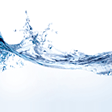
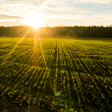
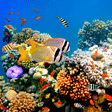
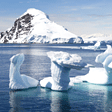
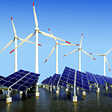
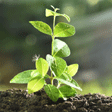
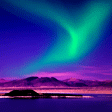

16 Comments
Thank you so much
Posted 12-06-2015 16:05
Thanks for the great report! SynergY is always on top of the youth actions!! :D
Posted 11-06-2015 09:02
Thank you Anagha Rajesh
Posted 09-06-2015 23:06
Thanks Jack and Good to hear about your initiatives too
Posted 09-06-2015 23:05
Thanks Luiz
Posted 09-06-2015 23:04
Hello Simran!
It has been so great to hear about what you are doing in collaboration with so many of your organization members to promote awareness regarding ocean debris.
Keep up the good work!!!!!!!!!!!!!!
Posted 09-06-2015 22:56
Happy belated world ocean day! awesome report Simran, thanks for sharing! I love the photos
Posted 09-06-2015 10:05
Reducing of plastic bags is big issue in a lot of countries including Brazil. We are working out on that!!! Your action is so encouraging for people! Well done Simram!!! Thanks for the report!!! =)
Posted 09-06-2015 05:28
Thanks Rahul
Posted 09-06-2015 03:56
Thanks Arushi
Posted 09-06-2015 03:56
Thanks Rohan
Posted 09-06-2015 03:55
750 k from a kilometer. The case is unfathomable. Thanks for the concern and brilliant written report Simran.
Only clean up programs are appaluading especially from the youth like you. We need to change the attitude of the people and ensure none remain aloof from such matters
Posted 09-06-2015 01:38
It's really pathetic that 750,000 bits of microplastic was collected in a single square kilometer of the Great Pacific Garbage Patch. That's a lot and we humans are responsible for that. You are right , Simran, many people are not yet aware /not realise the consequences of their actions so awareness levels have to be increased. Marine debris harm not only the water but also marine animals and we humans too , infact disturbs the entire ecosystem. Thanks for a very vivid report and thanks for highlighting the concern here.
What a theme ! Sea speaks to the souls...I love the wordings/theme.
Posted 08-06-2015 22:30
Well reported Simran.
Happy World Ocean day.
Marine debris is a grave concern. This must be avoided to increase. We all must follow green lifestyles & do not litter the oceans.
As such UAE has no dumping policy in the oceans but awareness must be spread.
Posted 08-06-2015 21:07
Thanks Bindu
We have to do whatever we possibly can to try and raise awareness as people do not even
realise the consequences of their actions
Posted 08-06-2015 19:12
Dear Simran, first of all Happy World Ocean day. It is really depressing to know incalculable amount of marine debris along Great Pacific Garbage Patch and most of the marine debris is PLASTIC.
It was out of my imagination that scientists have collected up to 750,000 bits of microplastic in a single square kilometer of the Great Pacific Garbage Patch. These debris has certainly affected the marine food web in a reverse direction.
All we can do personally from our side is avoiding the use of plastic bags which I guess would be the most feasible for every of us.
Thank you for sharing this useful eye- opening report dear Simran :)
Posted 08-06-2015 18:44